revision control
description: activity of managing the versions of one or more files
44 results
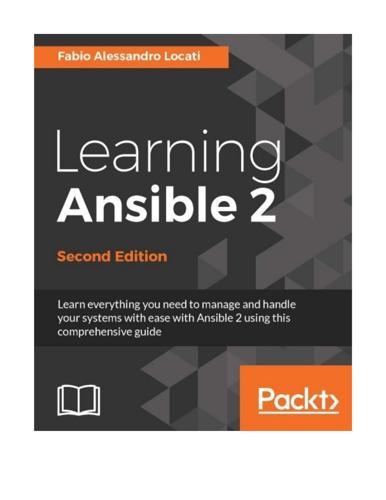
Learning Ansible 2 - Second Edition
by
Fabio Alessandro Locati
Published 21 Nov 2016
Debugging and Error Handling The check mode Indicating differences between files using --diff Functional testing in Ansible Functional testing using assert Testing with tags The --skip-tags Managing exceptions Trigger failure Summary 9. Complex Environments Code based on the Git branch A single stable branch with multiple folders Software distribution strategy Copying files from the local machine Revision control system with branches Revision control system with tags RPM packages Preparing the environment Deploying a web app with revision control systems Deploying a web app with RPM packages Creating a Spec file Building RPMs manually Building RPMs with Ansible Building RPMs with CI/CD pipelines Building compiled software with RPM packaging Deployment strategies Canary deployment Blue/Green deployment Optimizations Pipelining Optimizing with_items Understanding what happens when your tasks are executed Summary 10.
…
The disadvantage is that Git will create the /var/ www/.git folder which will contain your entire Git repository (history included) and, if not properly protected, will be freely downloadable by anyone. Note About 1% of Alexa's top 1 million websites have the Git folder publicly accessible, so be very careful if you want to use this distribution strategy. Revision control system with tags Another way of using revision control systems that is a little bit more complex but have some advantages, is leveraging the tagging system. This method requires to tag every time a new deployment has to be done and then checkout the specific tag on the server. This has all the advantages of the previous method, with the addition of the deployment history.
…
Version control systems can be divided into three major groups based on the three different models that they can implement: • Local data model • Client-server model • Distributed model The first category, the local data model, is the oldest (circa 1972) approach and is used for very specific use cases. This model requires all users to share the same filesystem. Famous examples of it are the Revision Control System (RCS) and Source Code Control System (SCCS). The second category, the client-server model, arrived later (circa 1990) and tried to solve the limitations of the local data model, creating a server that respected the local data model and a set of clients that dealt with the server instead of with the repository itself.
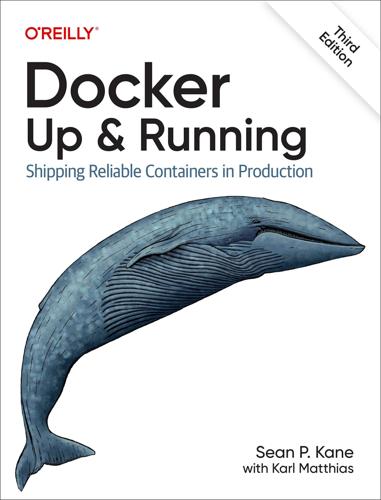
Docker: Up & Running: Shipping Reliable Containers in Production
by
Sean Kane
and
Karl Matthias
Published 14 May 2023
Having adapted our own organizations’ workflows to the Docker approach, we can confidently say that this is a change that can have a wide-reaching positive impact on many teams in your organization. If the workflow is implemented well, it can help you realize the promise of reduced communication overhead between teams. Revision Control The first thing that Docker gives you out of the box is two forms of revision control. One of them is used to track the filesystem layers that each Docker image is comprised of, and the other is a tagging system for those images. Filesystem layers Linux containers are made up of stacked filesystem layers, each identified by a unique hash, where each new set of changes made during the build process is laid on top of the previous changes.
…
, Benefits of the Docker Workflow installation (see installing Docker) production via Docker, Docker’s Role in Production Environments(see also production) structure of Docker, The Structure of Docker-The Structure of Docker version displayed, Printing the Docker Version website, The Docker Ecosystem workflow with Linux containersabout, Benefits of the Docker Workflow-Benefits of the Docker Workflow, The Docker Workflow building applications, Building deploying, Deploying packaging, Packaging process simplification, Process Simplification-Process Simplification revision control, Revision Control starting with default networking, Container Networking testing, Testing, Quick Overview tools for additional capabilities, The Docker Ecosystem-Additional tools Docker client, Important Terminology, Broad Support and Adoption(see also docker commands) API can do programmatically, Command-line statistics client/server model, Client/Server Model docker commands on server instead, Printing the Docker Version Go language used for, Docker Command-Line Tool installingabout, Docker Client Fedora Linux, Fedora Linux 36 (64-bit) Linux, Docker Client macOS, Docker Client, macOS, Mac OS X testing the installation, Testing the Setup Ubuntu Linux, Ubuntu Linux 22.04 (64-bit) Windows, Docker Client, Microsoft Windows 11-Chocolatey installation latest tag during deployment, Downloading Image Updates Swarm mode built in, Docker Swarm Mode tools that are similarnerdctl, nerdctl-nerdctl podman and buildah, podman and buildah-podman and buildah version command, Printing the Docker Version Docker Community EditionFedora installation, Fedora Linux 36 (64-bit)documentation, Fedora Linux 36 (64-bit) server installed, Docker ServerFedora or Ubuntu, Docker Server Windows or macOS, Docker Server Ubuntu installation, Ubuntu Linux 22.04 (64-bit)documentation, Ubuntu Linux 22.04 (64-bit) Docker Compose:- operator, Mandatory Values :?
…
If you change one line of code, you certainly don’t want to waste time rebuilding every dependency that your code requires into a new image. Instead, by leveraging the build cache, Docker can ensure that only the layers affected by the code change are rebuilt. Image tags The second kind of revision control offered by Docker makes it easy to answer an important question: what was the previous version of the application that was deployed? That’s not always easy to answer. There are a lot of solutions for non-containerized applications, from Git tags for each release, to deployment logs, to tagged builds for deployment, and many more.
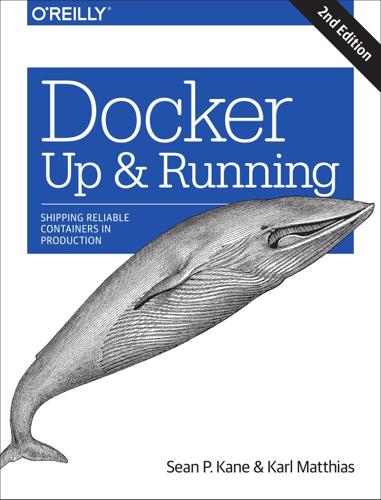
Docker: Up & Running: Shipping Reliable Containers in Production
by
Sean P. Kane
and
Karl Matthias
Published 15 Mar 2018
Having adapted our own organizations’ workflow to the Docker approach, we can confidently say that this change is a benefit that touches many teams in the organization. If the workflow is implemented well, it can help realize the promise of reduced communication over‐ head between teams. The Docker Workflow | 23 Revision Control The first thing that Docker gives you out of the box is two forms of revision control. One of them is used to track the filesystem layers that each Docker image is com‐ prised of and the other is a tagging system for those images. Filesystem layers Docker containers are made up of stacked filesystem layers, each identified by a unique hash, where each new set of changes made during the build process is laid on top of the previous changes.
…
The Docker Landscape. . . . . . . . . . . . . . . . . . . . . . . . . . . . . . . . . . . . . . . . . . . . . . . . . . . . . . . . 9 Process Simplification Broad Support and Adoption Architecture Client/Server Model Network Ports and Unix Sockets Robust Tooling Docker Command-Line Tool Docker Engine API Container Networking Getting the Most from Docker Containers Are Not Virtual Machines Limited Isolation Containers Are Lightweight Toward an Immutable Infrastructure Stateless Applications Externalizing State 9 12 14 14 15 15 16 16 17 18 19 20 21 21 22 22 v The Docker Workflow Revision Control Building Testing Packaging Deploying The Docker Ecosystem Wrap-Up 23 24 25 26 27 27 27 29 3. Installing Docker. . . . . . . . . . . . . . . . . . . . . . . . . . . . . . . . . . . . . . . . . . . . . . . . . . . . . . . . . . . 31 Docker Client Linux macOS, Mac OS X Microsoft Windows 10 Professional Docker Server systemd-Based Linux Non-Linux VM-Based Server Testing the Setup Ubuntu Fedora Alpine Linux Exploring the Docker Server Wrap-Up 32 32 34 35 35 36 36 45 45 45 45 46 48 4.
…
To simplify this a bit, remember that a Docker image contains everything required to run your application. If you change one line of code, you certainly don’t want to waste time rebuilding every dependency your code requires into a new image. Instead, Docker will use as many base layers as it can so that only the layers affected by the code change are rebuilt. Image tags The second kind of revision control offered by Docker is one that makes it easy to answer an important question: what was the previous version of the application that was deployed? That’s not always easy to answer. There are a lot of solutions for nonDockerized applications, from Git tags for each release, to deployment logs, to tagged builds for deployment, and many more.
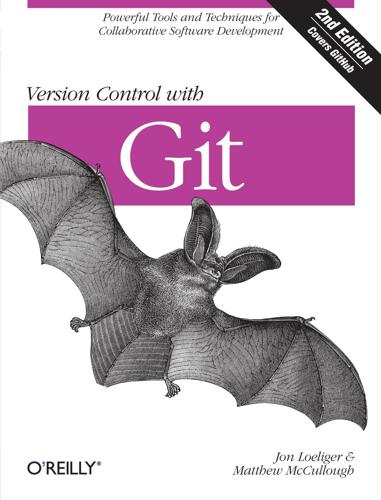
Version Control With Git: Powerful Tools and Techniques for Collaborative Software Development
by
Jon Loeliger
and
Matthew McCullough
Published 14 Aug 2012
A tool that manages and tracks different versions of software or other content is referred to generically as a version control system (VCS), a source code manager (SCM), a revision control system (RCS), and several other permutations of the words “revision,” “version,” “code,” “content,” “control,” “management,” and “system.” Although the authors and users of each tool might debate esoterics, each system addresses the same issue: develop and maintain a repository of content, provide access to historical editions of each datum, and record all changes in a log. In this book, the term version control system (VCS) is used to refer generically to any form of revision control system. This book covers Git, a particularly powerful, flexible, and low-overhead version control tool that makes collaborative development a pleasure.
…
Version Control with Git Jon Loeliger Matthew McCullough Published by O’Reilly Media Beijing ⋅ Cambridge ⋅ Farnham ⋅ Köln ⋅ Sebastopol ⋅ Tokyo Preface Audience Although some familiarity with revision control systems will be good background material, a reader who is not familiar with any other system will still be able to learn enough about basic Git operations to be productive in a short while. More advanced readers should be able to gain insight into some of Git’s internal design and thus master some of its more powerful techniques. The main intended audience of this book should be familiar and comfortable with the Unix shell, basic shell commands, and general programming concepts.
…
In order to support the sheer volume of update operations that would be made on the Linux kernel alone, he knew that both individual update operations and network transfer operations would have to be very fast. To save space and thus transfer time, compression and “delta” techniques would be needed. Using a distributed model instead of a centralized model also ensured that network latency would not hinder daily development. Maintain Integrity and Trust Because Git is a distributed revision control system, it is vital to obtain absolute assurance that data integrity is maintained and is not somehow being altered. How do you know the data hasn’t been altered in transition from one developer to the next? Or from one repository to the next? Or, for that matter, that the data in a Git repository is even what it purports to be?
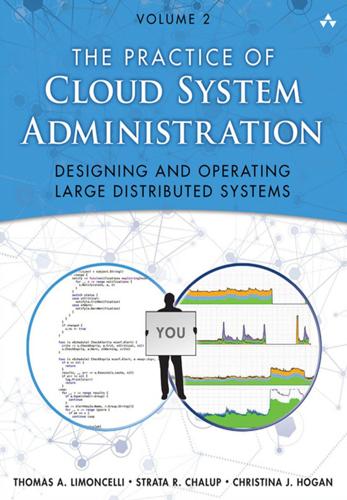
The Practice of Cloud System Administration: DevOps and SRE Practices for Web Services, Volume 2
by
Thomas A. Limoncelli
,
Strata R. Chalup
and
Christina J. Hogan
Published 27 Aug 2014
The alerting system needs to know who to alert, how, and who to escalate to. The visualization system needs to know which graphs to generate and how to do so. The storage system needs to know how to store and access the data. These configurations should be treated like any other software source code: kept under revision control, tested using both unit tests and system tests, and so on. Revision control tracks changes of a file over time, enabling one to see what a file looked like at any point in its history. A unit test framework would take as input time-series data for one or more metrics and output whether the alert would trigger. This permits one to validate alert formulas.
…
• Managed Configuration and Automation: The configuration files of all applications that are required for the service are kept in source code control and are subject to the same change management as the rest of the code. The same is true for all automation scripts. • Infrastructure as Code: With a software-defined datacenter (i.e., virtual machines), you can keep a description of the entire infrastructure as code that can be maintained under revision control. Infrastructure as code is further described in Section 10.6. • Automated Provisioning and Deployment: Every step of the deployment process is automated and/or scripted so that one can trigger a build that will go all the way through self-test to a deployment, or can trigger a deployment via a separate build command
…
While infrastructure can be set up manually, it is best to automate that process. Virtualization enables this kind of automation because virtual machines can be manipulated via software, as can software-defined networks. The more we treat infrastructure as code, the more we can benefit from software development techniques such as revision control and testing. This automation should be treated like any other software product and put through the same service delivery flow as any application. When service delivery is done right, it provides confidence, speed, and continuous improvement. Building, testing, and deployment of both an application and virtual infrastructure can be done in a completely automated fashion, which is streamlined, consistent, and efficient.

The Pragmatic Programmer
by
Andrew Hunt
and
Dave Thomas
Published 19 Oct 1999
[URL 32] Perl Power Tools ⇒ www.perl.com/pub/language/ppt/ A project to reimplement the classic Unix command set in Perl, making the commands available on all platforms that support Perl (and that's a lot of platforms). Source Code Control Tools [URL 33] RCS—Revision Control System ⇒ www.cs.purdue.edu/homes/trinkle/RCS/ GNU source code control system for Unix and Windows NT. [URL 34] CVS—Concurrent Version System ⇒ www.cvshome.com Freely available source code control system for Unix and Windows NT. Extends RCS by supporting a client-server model and concurrent access to files. [URL 35] Aegis Transaction-Based Configuration Management ⇒ http://www.canb.auug.org.au/~millerp/aegis.html A process-oriented revision control tool that imposes project standards (such as verifying that checked-in code passes tests).
…
., 217 who ate fish, 34 Plain text, 73 vs. binary format, 73 drawbacks, 74 executable documents, 251 leverage, 75 obsolescence, 74 and easier testing, 76 Unix, 76 Polymorphism, 111 Post-it note, 53, 55 Powerbuilder, 55 The Practice of Programming, 99 Pragmatic programmer characteristics, xviii e-mail address, xxiii Web site, xxiii Pre- and postcondition, 110, 113, 114 Predicate logic, 110 Preprocessor, 114 Presentation, 20 Problem domain, 58, 66 metadata, 146 Problem solving, 213 checklist for, 214 Productivity, 10, 35 Programming by coincidence, 173 Programming staff expense of, 237 Programming Windows, 265 Project glossary, 210 “heads”, 228 saboteur, 244 schedules, 68 see also Automation; Team, project Project librarian, 33, 226 Prototyping, 53, 216 architecture, 55 disposable code, 56 kinds of, 54 and programming languages, 55 and tracer code, 51 using, 54 Publish/subscribe protocol, 158 Pugh, Greg, 95n Purify, 136 PVCS Configuration Management, 271 Python, 55, 99, 267 Q Quality control, 9 requirements, 11 teams, 225 Quarry worker’s creed, xx Quicksort algorithm, 180 R Rational Unified Process, 227n Raymond, Eric S., 273 RCS, see Revision Control System Real-world data, 243 Refactoring, 5, 185 automatic, 187 and design, 186 testing, 187 time constraints, 185 Refactoring browser, 187, 268 Refinement, excessive, 11 Regression, 76, 197, 232, 242 Relationship has-a, 304 kind-of, 111, 304 Releases, and SCCS, 87 Remote Method Invocation (RMI), 128 exception handling, 39 Remote procedure call (RPC), 29, 39 Repository, 87 Requirement, 11, 202 business problem, 203 changing, 26 creep, 209 DBC, 110 distribution, 211 documenting, 204 in domain language, 58 expressing as invariant, 116 formal methods, 220 glossary, 210 over specifying, 208 and policy, 203 usability testing, 241 user interface, 203 Researching, 15 Resource balancing, 129 C++ exceptions, 132 checking, 135 coupled code, 130 dynamic data structures, 135 encapsulation in class, 132 Java, 134 nest allocations, 131 Response set, 141, 242 Responsibility, 2, 250, 258 Reuse, 33, 36 Reversibility, 44 flexible architecture, 46 Revision Control System (RCS), 250, 271 Risk management, 13 orthogonality, 36 RMI, see Remote Method Invocation Rock-n-roll, 47 RPC, see Remote procedure call Rubber ducking, 3, 95 Rules engine, 169 S Saboteur, 244 Samba, 272 Sample programs, see Example code Sather, 114, 268 SCCS, see Source code control system Schedule, project, 68 Schrödinger, Erwin (and his cat), 47 Scope, requirement, 209 Screen scraping, 61 Scripting language, 55, 145 Secure hash, 74 sed, 99 Sedgewick, Robert, 183 Self-contained components, see Orthogonality; Cohesion Semantic invariant, 116, 135 sendmail program, 60 Sequence diagram, 158 Server code, 196 Services, design using, 154 Shell, command, 77 vs.
…
., 273 RCS, see Revision Control System Real-world data, 243 Refactoring, 5, 185 automatic, 187 and design, 186 testing, 187 time constraints, 185 Refactoring browser, 187, 268 Refinement, excessive, 11 Regression, 76, 197, 232, 242 Relationship has-a, 304 kind-of, 111, 304 Releases, and SCCS, 87 Remote Method Invocation (RMI), 128 exception handling, 39 Remote procedure call (RPC), 29, 39 Repository, 87 Requirement, 11, 202 business problem, 203 changing, 26 creep, 209 DBC, 110 distribution, 211 documenting, 204 in domain language, 58 expressing as invariant, 116 formal methods, 220 glossary, 210 over specifying, 208 and policy, 203 usability testing, 241 user interface, 203 Researching, 15 Resource balancing, 129 C++ exceptions, 132 checking, 135 coupled code, 130 dynamic data structures, 135 encapsulation in class, 132 Java, 134 nest allocations, 131 Response set, 141, 242 Responsibility, 2, 250, 258 Reuse, 33, 36 Reversibility, 44 flexible architecture, 46 Revision Control System (RCS), 250, 271 Risk management, 13 orthogonality, 36 RMI, see Remote Method Invocation Rock-n-roll, 47 RPC, see Remote procedure call Rubber ducking, 3, 95 Rules engine, 169 S Saboteur, 244 Samba, 272 Sample programs, see Example code Sather, 114, 268 SCCS, see Source code control system Schedule, project, 68 Schrödinger, Erwin (and his cat), 47 Scope, requirement, 209 Screen scraping, 61 Scripting language, 55, 145 Secure hash, 74 sed, 99 Sedgewick, Robert, 183 Self-contained components, see Orthogonality; Cohesion Semantic invariant, 116, 135 sendmail program, 60 Sequence diagram, 158 Server code, 196 Services, design using, 154 Shell, command, 77 vs.
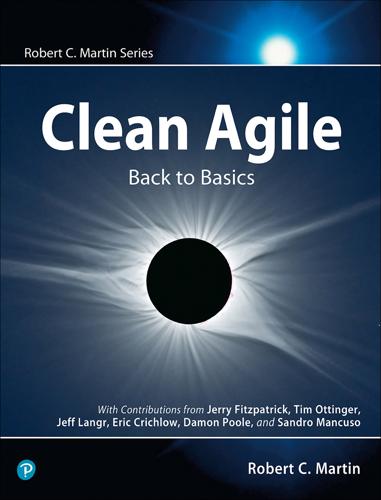
Clean Agile: Back to Basics
by
Robert C. Martin
Published 13 Oct 2019
The first I remember was Source Code Control System (SCCS). SCCS behaved just like the checkout board. You locked a module on disk, preventing anyone else from editing it. This kind of lock is called a pessimistic lock. Again, the cycle time was the length of the lock. It could be hours, days, or months. SCCS gave way to Revision Control System (RCS), which gave way to Concurrent Versions System (CVS), all of which used one form or another of pessimistic lock. So the cycle time remained long. However, disks are a much more convenient medium of storage than tapes. The process of copying modules from master to work tapes tempted us to keep those modules large.
…
See Software development/project management; Waterfall project management Punch cards, in source code control, 83–84 Q QA (quality assurance) Acceptance Tests and, 79–80 collaboration in, 91 expectation of no faults, 52 liability of testing at the end, 92–93 QA testers as subset of developers, 59 role and burden of, 91 test automation, 52–53 Quality decreasing to meet schedules, 29–30 developer bill of rights, 59 Iron Cross, (good, fast, cheap, done), 15 Questioning, as coaching competency, 159 R Rational Unified Process (RUP), 2, 168 RCS (Revision Control System), 86 Reasonable expectations. See Expectations, reasonable Refactoring. See also Simple Design Circle of Life practices, 34 expectation of continuous improvement, 50 expectation of inexpensive adaptability, 50 expectation of stable productivity, 50 overview of, 123–124 Red/Green/Refactor cycle, 124–125 remedy for shipping bad code, 45 Software Craftsmanship practices, 176, 179–180 Refactoring (Fowler), 123, 183 Regression tests, 92 Releases.
…
See also Small Releases Agile hangover and, 169 defined, 87 expectation mismatch, 171 Remote work, 95–96 Repository tools, for Agile developers, 148 Responsibility for Acceptance Tests, 93 developer bill of rights, 60–61 expectation of team sharing, 54 Return on investment (ROI), estimating stories, 71–72 Revision Control System (RCS), 86 Royce, Winston, 5–6 Runaway Process Inflation, 22 RUP (Rational Unified Process), 2, 168 S Scalability, of Agile, 160 SCCS (Source Code Control System), 85–86 Schedules changes to, 28 impact of changing quality, 29–30 impact of changing scope, 30–31 impact of staff addition, 28–29 Schwaber, Ken, 8, 11 Scientific Management, 4, 6–7 Scope, changing to meet schedules, 30–31 Scripts, core tools for Agile developers, 148 Scrum Agile synonymous with, 172 comparing ideology with methodology, 174 growing the Agile adaptation, 163 history of Agile, 8 Product Owner, 94 representatives at Snowbird meeting, 11 Scrum Master as coach, 143 Scrum Master certification, 144 selecting Agile methods, 136 Sharon, Yonat, 8 Shirt Sizes approach, estimating stories, 76 Simple Design Circle of Life practices, 34 expectation of continuous improvement, 50 expectation of inexpensive adaptability, 50 expectation of stable productivity, 50 refactoring and, 125 remedy for shipping bad code, 45 rules of (Beck), 125–126 Software Craftsmanship practices, 176, 179–180 SOLID principles, 165 weight of design and, 127 Simplicity, Agile values, 135–136 Sleep, Sustainable Pace and, 104 Small, INVEST guidelines for stories, 75 Small Releases Circle of Life practices, 33 disks and SCCS in source code control, 85–86 driving team to shorter and shorter release cycles, 87 Git and, 87 overview of, 82–83 SOLID principles, 164 source code control, 83–84 subversion in source code control, 86 tapes in source code control, 85 Smalltalk, 8 Snowbird meeting goal of, 2 healing divide between business and development, 96 overview of, 10–13 post-Snowbird, 13–14 starting the Agile momentum, 183 Software Craftsmanship Agile and, 181 conclusion/summary, 182 discussing practices, 177–178 focusing on value and not practice, 176–177 ideology vs. methodology, 174–175 impact on companies, 180–181 impact on individuals, 178–179 impact on industry, 179–180 overview of, 173–174 practices, 175–176 Software development/project management Agile addressing problems of small teams, 146–147 Agile as religion, 189 Agile promising fast delivery, 168–169 Agile use, 187 Analysis Phase of Waterfall approach, 19–20 charts for data presentation, 15–18 comparing Agile with Waterfall approach, 23–24 comparing Agile with XP, 180 dates frozen while requirements change, 18 Death March Phase of Waterfall approach, 22 dependence of contemporary society on, 39–42 Design Phase of Waterfall approach, 20–21 Design Phase of waterfall approach, 19–20 Implementation Phase of Waterfall approach, 21–22 Iron Cross of, 15, 27 The Meeting beginning Waterfall approach, 18–19 overview of, 14 potential dangers, 42–43 SOLID principles overview of, 164 Software Craftsmanship practices, 176, 179–180 Source code control disks and SCCS in, 85–86 Git for, 87 history of, 83–84 subversion in, 86 tapes in, 85 Source Code Control System (SCCS), 85–86 SpecFlow, automated test tools, 89–90 Specialization, Collective Ownership and, 105 Specification, as tests, 88 Speed.

Geek Sublime: The Beauty of Code, the Code of Beauty
by
Vikram Chandra
Published 7 Nov 2013
They make the programmer’s job easier, but the programmer must learn how to use them, must educate herself in their idiosyncrasies and the workarounds for their faults. This is not a trivial task. For example, every programmer needs to use a revision control system to track changes and easily branch and merge versions of code. The best-regarded revision control system today is Git, created by Linus Torvalds (and named, incidentally, after his famous cantankerousness).21 Git’s interface is command-line driven and famously UNIX-y and complex, and for the newbie its inner workings are mysterious. In response to a blog post titled “Git Is Simpler Than You Think,” an irritated Reddit commenter remarked, “Yes, also a nuclear submarine is simpler than you think … once you learn how it works.”22 I myself made three separate attempts to learn how Git worked, gave up, was frustrated enough by other revision control systems to return, and finally had to read a 265-page book to acquire enough competence to use the thing.
…
In response to a blog post titled “Git Is Simpler Than You Think,” an irritated Reddit commenter remarked, “Yes, also a nuclear submarine is simpler than you think … once you learn how it works.”22 I myself made three separate attempts to learn how Git worked, gave up, was frustrated enough by other revision control systems to return, and finally had to read a 265-page book to acquire enough competence to use the thing. Git is immensely powerful and nimble, and I enjoy using it, but maneuvering it felt—at least initially—like a life achievement of sorts. You may have to use a dozen tools and websites to handle the various logistical aspects of software development, and soon the triumph starts to wear a little thin.
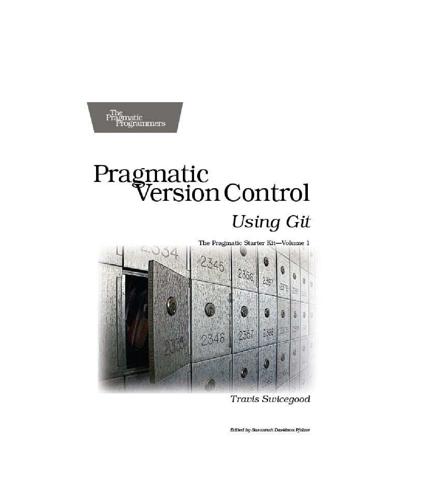
Pragmatic Version Control Using Git
by
Travis Swicegood
Published 1 Dec 2008
In fact, the most reliable method for converting a CVS repository to Git is to convert it to a Subversion repository first using the cvs2svn command.2 cvs2svn is a tool for converting a CVS repository to a Subversion repository. Git ships with a tool for importing CVS repositories called git cvsimport. Since the cvs2svn command is much more stable to a Git repository, we’ll focus on it. To start with, you need to get revision control system (RCS) files from your CVS repository. Once you have those, you need to convert them to an SVN dump file using the cvs2svn tool: prompt> cd /path/to/cvs-rcs-files prompt> cvs2svn --dumpfile=svndump Creating the dump file allows you to filter out any unnecessary data by using tools such as svndumpfilter.3 With your new svndump prepared, now you need to create a Subversion repository to import it into.
…
Prepared exclusively for Trieu Nguyen Download at Boykma.Com Index A Adding files, 52–56 Adding, remote repositories, 106–107 adduser, 150 Aliases, 58 apt-get, 167 Archive, 46 AsciiDoc, 34 Authentication, 103 B Bisecting repository, 131f, 132f, 131–134 Branches, 22f, 21–22, 43–45, 65–79 changes in (reflog), 129 checking out, 68 commands for, 160 conflict handling, 74–77 creating, 67–68 defined, 66–67 deleting, 77–78 merging, 69–73 names for, valid, 114–115 rebasing, 125–128 release, 112–114 renaming, 78–79 see also Merging Branching and merging, 10 Buffer, 58 Bugs, 113, 119, 131 C Centralized repository model, 16 Changes, undoing, 91–94 Checked-out branch, 68 cherry-pick, 73 Cloning remote repositories, 103–104 Prepared exclusively for Trieu Nguyen repositories, 48, 118 Color control, 32, 42, 61 Commit messages, 42, 83 Commits breaking down, 98 cherry-picking, 71 orphaned, 129f reordering, 96 squashing, 70, 96 submodules and, 119 see also Changes, undoing Committing files, 55–58 Configuration, 31–33 Configuration management (CM), 25 Conflict resolution, 23, 74–77 Conflicts, 74 Content tracking, 88–91 Conventions, 13, 110 Copying files, 62 CPAN, 142 Creating branches, 67–68 CVS, 138f importing from, 146 cvs2svn, 146 D de Bie, Pieter, 33 Deleting branches, 77–78 Directed acyclic graph (DAG), 66 Directories, tracking, 56 Distributed architecture, 10 Distributed version control systems (DVCSs), 10, 15, 16 see also Git Documentation, 35, see History, repository DVCSs, see Distributed version control systems Download at Boykma.Com E CLIPSE G IT PLUG - IN E Eclipse Git plug-in, 169 Empty directories, 56 Errors, 144 Exporting repository, 124–125 F Feature branches, 70 Fetching, remote repositories, 104–105 Files adding, 52–56 committing, 55–58 copying, 62 differences between, 60 hunks, 54 ignoring, 63, 64 managing, 61–64 manipulation of, 18–19 status and history of, 58–61 Fink, 26 G Git branches, 22 built-in help for, 34–35 commands in, 122 configuration of, 31–33 conventions, 13 development of, 10 forums for, 173 GUI, 33, 34f hashes in, 39 installation of, 30f, 31f, 26–31, 32f merging, 23 migrating to, 136–146 git-svn, 140–142 CVS commands in, 138f importing from CVS, 146 importing from Subversion, 141–144 pushing to Subversion, 145 Subversion commands in, 137f SVN communication, 139f, 136–139 tracking changes from Subversion, 143–145 network protocols, 101f, 102f, 100–103 protocol for, 101 pulling, 19 Prepared exclusively for Trieu Nguyen 176 GIT - GUI pushing, 17 setup of, 158 strengths of, 10 submodules, 116–121 URL components, 101, 102f user manual, 172 website for, 172 see also Gitosis git, 13 git add, 52, 57, 62, 127 git archive, 47, 124, 125 git bisect, 131, 132, 134 git blame, 86, 89, 90 git branch, 43, 66, 68, 77, 110, 111, 113, 130 git checkout, 45, 68, 121 git checkout HEAD, 106 git cherry-pick, 72, 73 git clone, 48, 103 git commit, 56, 58, 92 git config, 58 git daemon, 154, 155 git diff, 60, 85, 86, 89 git fetch, 104 git gc, 123, 124, 143 git init, 103 #git IRC channel, 173 git log, 81, 84, 86, 97, 112, 113, 130 Git Mailing List, 173 git merge, 70, 71 git mergetool, 76, 126 git mv, 62 git pull, 104 git push, 105, 152 git rebase, 45, 95, 126–129, 144 git remote add, 107 git remote rm, 108 git reset, 73, 94, 98 git revert, 93 git rm, 62 git status, 59, 63, 71, 73, 121 git submodule, 117, 119, 120 git submodule add, 117 git submodule init, 119 git submodule update, 119, 121 git svn clone, 141, 143 git svn dcommit, 145 git svn fetch, 144 git svn rebase, 143–145 git tag, 110, 111 git-gui, 168 Download at Boykma.Com GIT - SH git-sh, 171 git-svn, 140–142 GitHub, 13, 102, 109, 171 gitk, 33, 167 GitNub, 170 Gitorious, 169, 172 Gitosis, 147–155 admin setup, 149–150 configuration, 151–152 dependencies, 148 initialization, 151 installation of, 147, 149 public repository, 154–155 repositories for, 152–154 server configuration, 150 gitosis-init, 151 gitweb, 168 GitX, 168 Graphical user interface, see GUI GUI, 33, 34f gzip, 47 H Hashes options for, 84 SHA-1, 39 Help, built-in, 34–35 History, repository, 80–99 blame, 86–88 changes, undoing, 91–94 commands for, 162 compacting, 123–124 content tracking, 88–91 log of, 81–82 reviews of, 94–99 revision ranges, 82–85 version differences, 85–86 Hook scripts, 147 Hosting, 171–172 HTTP, 102 Hunk, 54 I Ignoring files, 63, 64 Installation, 30f, 31f, 26–31, 32f Gitosis, 147, 149 Linux, 27–28 Mac OS X, 28 Windows, 28–31, 32f Interactive mode, 54 Prepared exclusively for Trieu Nguyen 177 REFLOG K Keys, 150, 152 Komodo IDE, 169 L Linux installation, 27–28 Locking, 24 Log messages, 42, 81, 82 M Mac OS X CPAN, 142 FileMerge Utility, 77f installation, 28 MacPorts, 26, 140, 142 MacVim, 63, 169 Makefiles, 26 Master branch, 43, 45, 112 Merging, 22–23, 69–73 Milestones, marking, 110–112 Moving files, 62 MSys, 29 N Naming, 110, 114–115 Network protocols, 101f, 102f, 100–103 nohup, 155 O Online resources, 13 Optimistic locking, 24 Organization, 19–20 Orphaned commits, 129f P patch mode, 54 Perl bindings, 140 Port 9418, 101 Practices of an Agile Developer: Working in the Real World, Subramaniam & Hunt, 141 Public key, 150, 152 Pulling, 19 Pushing, 17, 19, 105–106, 145 Python, 148 R Rebasing, 45 Rebasing branches, 125–128 reflog, 129f, 128–130 Download at Boykma.Com R EGULAR EXPRESSIONS Regular expressions, 87 Release branches, 43, 45, 112–114 Releases, 45f, 46f, 44–47, 116 Remote repositories, 100–107 adding, 106–107 cloning, 103–104 commands for, 164 fetching, 104–105 network protocols, 101f, 102f, 100–103 pushing changes, 105–106 Remote repository see also Repository Renaming branches, 78–79 Renaming files, 62 repo.or.cz, 171 Repository, 16–17 adding files, 52–56 bisecting, 131f, 132f, 131–134 branches and, 43–44 changing, 37–39 cloning, 48, 118 committing to, 55–58 creating, 37 exporting, 124–125 file management, 61–64 file status and history, 58–61 Gitosis and, 152–154 history, compacting, 123–124 hosting services for, 171–172 log messages for, 42 milestones, marking, 110–112 private, 95 public, 154–155 release branches, 112–114 releases and, 45f, 46f, 44–47 shrinking, 143 tracking, 115–116 tracking changes in, 40–41, 129f, 128–130 tracking, submodules for, 116–121 see also History, repository; Remote repositories Resources bundles, 167 online, 13, 172–173 repository hosting, 171–172 third-party tools, 168–171 Reverting commits, 93 Revision control system (RCS), 146 Revisions, 18, 82 Prepared exclusively for Trieu Nguyen 178 V ERSION CONTROL SYSTEMS (VCS S ) S Server setup, see Gitosis SHA (secure hash algorithm), 39 Squashing, 70, 96 SSH, 101 SSH public key, 149, 152 ssh-keygen, 149, 150 Staged changes, 52 Staging area, 52 Status check, 59 Straight merging, 69 Submodules, 116–121 Subversion, 11, 58 commands for, 165 commands in Git, 137f Git communication and, 139f, 136–139 importing to Git, 141–144 keep up-to-date with, 143–145 pushing changes to, 145 SVN/Core.pm missing file, 140 Syntax, names, 114 T Tags, 20–21, 44, 84, 110–112, 114–115 Tcl/Tk GUI toolkit, 33 TextMate Git Bundle, 169 TicGit, 170 Torvalds, Linus, 10 Tracking, projects, 115–116 Tracking, tags, 20–21 Trunk, 43 U Upstream repository, 19 URL components, 101, 102f Username, 32 V VCSCommand, 169 VCSs, see Version control systems Version control systems (VCSs) benefits of, 10 branches, 22f, 21–22 configuration management, 25 defined, 15 file manipulation, 18–19 history, 80–99 blame, 86–88 changes, undoing, 91–94 Download at Boykma.Com V ERSIONS content tracking, 88–91 log, 81–82 reviews of, 94–99 revision ranges, 82–85 version differences, 85–86 locking, 24 merging, 22–23 organizing, 19–20 repository, 16–17, 37 tags, 20–21 Prepared exclusively for Trieu Nguyen 179 W ORKING what to store in, 17 working trees, 18 see also Git Versions, 85–86, 155 Virtual machines (VMs), 106 W Windows installation, 28–31, 32f Working trees, 18 TREES Download at Boykma.Com Web 2.0 Welcome to the Web, version 2.0.
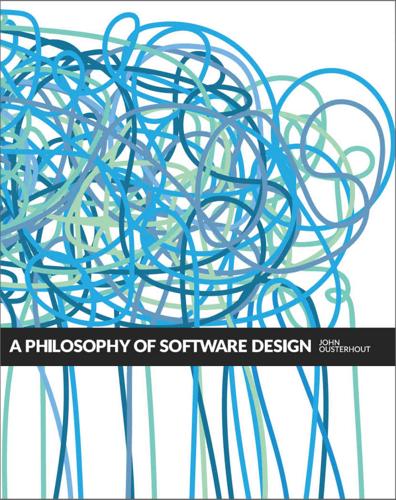
Philosophy of Software Design
by
John Ousterhout
Published 28 Jan 2018
In addition, add short comments in the other places that refer to the central location: “See the comment in xyz for an explanation of the code below.” If the reference becomes obsolete because the master comment was moved or deleted, this inconsistency will be self-evident because developers won’t find the comment at the indicated place; they can use revision control history to find out what happened to the comment and then update the reference. In contrast, if the documentation is duplicated and some of the copies don’t get updated, there will be no indication to developers that they are using stale information. Don’t redocument one module’s design decisions in another module.
…
It’s important that readers can easily find all the documentation needed to understand your code, but that doesn’t mean you have to write all of that documentation. 16.5 Maintaining comments: check the diffs One good way to make sure documentation stays up to date is to take a few minutes before committing a change to your revision control system to scan over all the changes for that commit; make sure that each change is properly reflected in the documentation. These pre-commit scans will also detect several other problems, such as accidentally leaving debugging code in the system or failing to fix TODO items. 16.6 Higher-level comments are easier to maintain One final thought on maintaining documentation: comments are easier to maintain if they are higher-level and more abstract than the code.
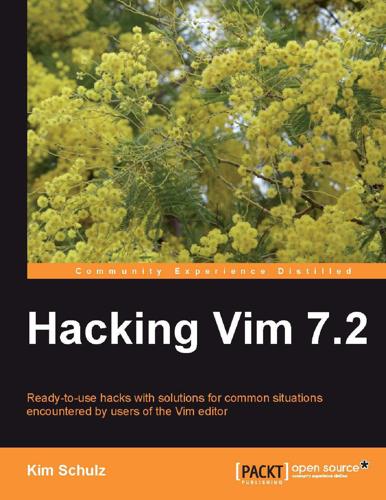
Hacking Vim 7.2
by
Kim Schulz
Published 29 Apr 2010
[ 206 ] Appendix A A typical IDE, if we talk of programs such as MS Visual Studio®, basically consists of the following things: • An editor with automatic indentation, syntax coloring, and autocompletion • An integrated compiler that makes it possible to jump directly to compile errors in the code • An integrated debugger that makes it possible to step through the code • A file explorer such that you can look through the files to add to the project • A project browser to look through the files included in the project • A tag browser to look through the tags (definitions, functions, methods, classes) • An easy way to jump between files, definitions, and so on • Maybe integration with some version / revision control system So are all of these things, at all, possible in Vim? Now, let's go through all of the items, one by one, and see how we can get that functionality in Vim. The first item is obvious, as Vim is an editor it does just that. The second item in the list is the integration with a compiler.
…
[ 208 ] Appendix A When it comes to moving around in the Vim editor window itself, Vim already has the shortcuts gf and gd, which take you to the file or declaration of the tag under the cursor. This makes it very fast to jump around in the files. Finally, there is the integration with version / revision control systems such as CVS, SVN, and Perforce. As with all the other functionality that you need to construct a Vim IDE, this integration is of course also available via scripts. I would recommend the following scripts for the mentioned systems: • CVS and SVN, which are located at http://vim.sourceforge.net/ scripts/script.php?
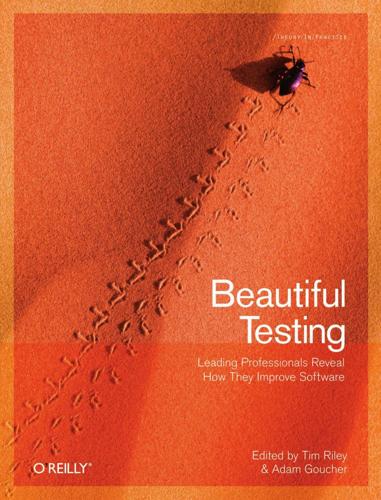
Beautiful Testing: Leading Professionals Reveal How They Improve Software (Theory in Practice)
by
Adam Goucher
and
Tim Riley
Published 13 Oct 2009
To a developer, it is clear that a defect lives in the source code Tools such as Bugs Everywhere§ operate on the purist concept that, since bugs ultimately reside in the source code, defect tracking should live alongside the code and use the same revision control system (e.g., CVS, SVN, Mercurial). This does have significant advantages, especially for small systems where the entire code base can live within one revision control system. When a defect is fixed, both the patched source code and updated defect report are checked into the revision control system, and the correspondence between the defect state and the defect report state are correctly and automatically propagated to branches of the source tree without requiring the developer or software QA person to maintain an ad-hoc set of cross references in the source tree and the state in the defect database.
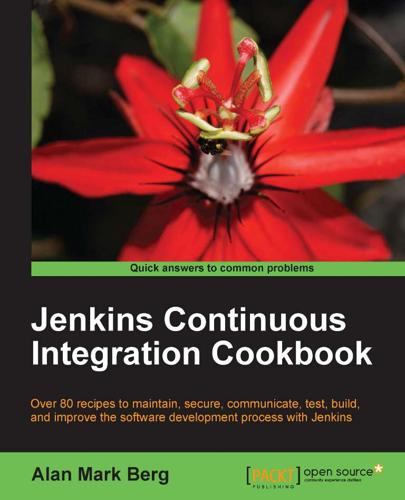
Jenkins Continuous Integration Cookbook
by
Alan Berg
Published 15 Mar 2012
For example: <build> <plugins> <plugin> <groupId>org.codehaus.mojo</groupId> <artifactId>properties-maven-plugin</artifactId> <version>1.0-alpha-2</version> <executions> <execution> <phase>initialize</phase> <goals> <goal>read-project-properties</goal> </goals> <configuration> <files> <file>${fullpath.to.properties}</file> </files> </configuration> </execution> </executions> </plugin> </plugins> </build> If you use a relative path to the properties file, then the file can reside in your Revision control system. If you use a full path, then the property file can be stored on the Jenkins server. The second option is preferable if sensitive passwords, such as for database connections, are included. Jenkins has the ability to ask for variables when you run a Job manually. This is called a Parameterized build (https://wiki.jenkins-ci.org/display/JENKINS/Parameterized+Build).
…
As the name suggests, this phase is useful for testing before packaging. The second example script highlights the strength of combining Groovy with Ant. The SCP task (http://Ant.apache.org/manual/Tasks/scp.html) is run a large number of times across many servers. The script first asks for the USERNAME and password, avoiding storage on your file system or your revision control system. The Groovy script expects you to inject the variables host: full_path_to_location and myfile. Notice the similarity between the Ant SCP task and the way it is expressed in the pom_ant_contrib.xml file. There's more... Creating custom property files on the fly allows you to pass on information from one Jenkins Job to another.
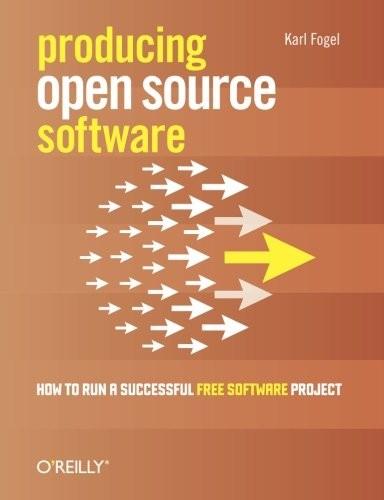
Producing Open Source Software: How to Run a Successful Free Software Project
by
Karl Fogel
Published 13 Oct 2005
For example, Evolution has this function as a keyboard shortcut, but not a button (Ctrl+L)." [33] Since I wrote that, I've learned that there is at least one list management system that offers this feature: Siesta. See also this article about it: perl.com/pub/a/2004/02/05/siesta.html Version Control A version control system (or revision control system) is a combination of technologies and practices for tracking and controlling changes to a project's files, in particular to source code, documentation, and web pages. If you have never used version control before, the first thing you should do is go find someone who has, and get them to join your project.
…
"Version" Versus "Revision" The word version is sometimes used as a synonym for "revision", but I will not use it that way in this book, because it is too easily confused with "version" in the sense of a version of a piece of software—that is, the release or edition number, as in "Version 1.0". However, since the phrase "version control" is already standard, I will continue to use it as a synonym for "revision control" and "change control". Sorry. One of open source's most endearing characteristics is that it has two words for everything, and one word for every two things. commit To make a change to the project; more formally, to store a change in the version control database in such a way that it can be incorporated into future releases of the project.
…
My thoughts on which to choose for your project are already given in the section called “Choosing a Version Control System”, and it's not sustainable for me to maintain an increasingly out-of-date list of other version control systems that you are unlikely to use anyway. If you want a list, though, https://en.wikipedia.org/wiki/List_of_revision_control_software is a good place to start. Appendix C. Obsolete Appendix (was: Free Bug Trackers) I used to maintain here a list of all the open source bug trackers I knew anything about, with comments on some of them. Bug trackers are still an active area of development and experimentation, perhaps even more so than version control systems (see Appendix B, Obsolete Appendix (was: Free Version Control Systems)), and I've found it increasingly unsustainable to maintain an appendix that stays up-to-date with the field.

Growth Hacking Techniques, Disruptive Technology - How 40 Companies Made It BIG – Online Growth Hacker Marketing Strategy
by
Robert Peters
Published 18 May 2014
This is the continued justification for the emphasis on free content creation that caters to the point of view of the potential customer. GitHub GitHub, a web-based software development environment, launched in 2008, initially focused on facilitating projects that used the Git system for revision control. The idea for the site was developed on a whim over a weekend. In 3 years and 8 months, however, it grew to become a site with a million code repositories. In December 2013, that number reached a staggering 10 million. At its core, GitHub is a success because it solves a problem. The Git version-control system developed by Linus Torvalds in 2005 made collaboration possible for Linux kernel development, but it was far from an “easy” solution.

Pro AngularJS
by
Adam Freeman
Published 25 Mar 2014
This fragment comes from Listing 10-2 and sets up a one-way data binding on the todos.length property, which I explain in the following section. Some developers don’t like the attribute approach, and—surprisingly often—attributes cause problems in development tool chains. Some JavaScript libraries make assumptions about attribute names, and some restrictive revision control systems won’t let HTML content be committed with nonstandard attributes. (I encounter this most often in large corporations where the revision control system is managed by a central group that lags far behind the needs of the development teams it supports.) If you can’t or won’t use custom attributes, then you can configure directives using the standard class attribute, as follows: ...
…
Later, I’ll start to group multiple related controllers in a file, but I put the top-level controller in its own file. Listing 6-2 shows the contents of the controllers/sportsStore.js file, which I created for this purpose. ■■Tip The reason I keep the top-level controller in a separate file is so that I can keep an eye on it when it changes in a revision control system. The top-level controller tends to change a lot during the early stages of development, when the application is taking shape, and I don’t want the avalanche of change notifications to mask when other controllers are being altered. Later in the project, when the main functionality is complete, the top-level controller changes infrequently, but when it does change, there is a potential for breaking pretty much everything else in the application.

Code Complete (Developer Best Practices)
by
Steve McConnell
Published 8 Jun 2004
If you discover a new defect that you don't remember encountering in an older version of a program, rather than seeing a neurologist about amnesia, you can use a comparator to compare current and old versions of the source code, determine exactly what changed, and find the source of the problem. This functionality is often built into revision-control tools. Merge Tools One style of revision control locks source files so that only one person can modify a file at a time. Another style allows multiple people to work on files simultaneously and handles merging changes at check-in time. In this working mode, tools that merge changes are critical. These tools typically perform simple merges automatically and query the user for merges that conflict with other merges or that are more involved.
…
Will programmers step through their code in the debugger before they check it in? Will programmers integration-test their code before they check it in? Will programmers review or inspect each other's code? Cross-Reference For more details on quality assurance, see Chapter 20. Tools Have you selected a revision control tool? Have you selected a language and language version or compiler version? Have you selected a framework such as J2EE or Microsoft .NET or explicitly decided not to use a framework? Have you decided whether to allow use of nonstandard language features? Have you identified and acquired other tools you'll be using—editor, refactoring tool, debugger, test framework, syntax checker, and so on?
…
Opening up a working system is more like opening up a human brain and replacing a nerve than opening up a sink and replacing a washer. Would maintenance be easier if it was called "Software Brain Surgery?" — Gerald Weinberg Save the code you start with. Before you begin refactoring, make sure you can get back to the code you started with. Save a version in your revision control system, or copy the correct files to a backup directory. Keep refactorings small. Some refactorings are larger than others, and exactly what constitutes "one refactoring" can be a little fuzzy. Keep the refactorings small so that you fully understand all the impacts of the changes you make.
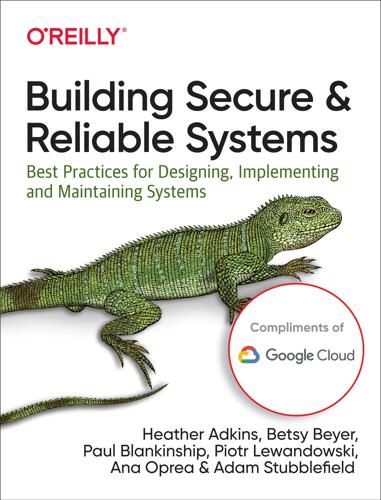
Building Secure and Reliable Systems: Best Practices for Designing, Implementing, and Maintaining Systems
by
Heather Adkins
,
Betsy Beyer
,
Paul Blankinship
,
Ana Oprea
,
Piotr Lewandowski
and
Adam Stubblefield
Published 29 Mar 2020
See the sshd_config manpage for more details. 13 At scale, it may be impractical to log and store many duplicate copies of the file. Logging the hash allows you to correlate the config back to the revision control system, and detect unknown or unexpected configurations when auditing the log. As icing on the cake, and if space allows, you may wish to store rejected configurations to aid a later investigation. Ideally, all configs should be signed, indicating they came from the revision control system with a known hash, or rejected. 14 A bearer token is just a cryptographic signature, signed by the rate limiter, which can be presented to anyone with the rate limiter’s public key.
…
You can improve reliability by requiring MPA for all actions that allow a potentially unsafe action, similar to a code review system. This process improvement can improve security against insider risk threats (for more about types of adversaries, see Chapter 2) by facilitating fast incident response (by bypassing revision control system and code review dependencies) without allowing broad unilateral access. As your organization grows, standardization is your friend. A uniform authorization framework facilitates team mobility, as more people know how to code against and implement access controls with a common framework.
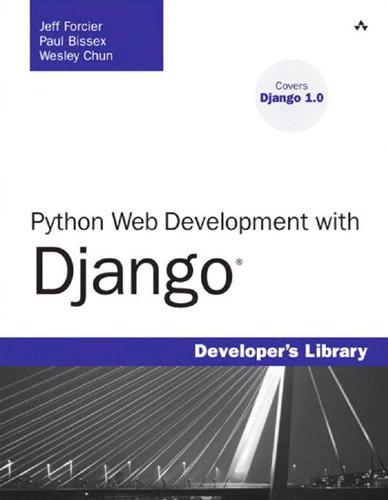
Python Web Development With Django
by
Jeff Forcier
Version Control If you’re developing any kind of software at all, and you’re not using version control, you’re missing out.Version control systems keep a complete revision history of your project, enabling you to rewind your code to any point in time (for example, to the hour before you made that innocent-looking change that broke something you didn’t notice for a week). Older version control systems such as SCCS (Source Code Control System) and RCS (Revision Control System) were simple, either maintaining the original versions of files plus deltas (minor changes to files between versions) or vice versa—keeping the latest editions of files and applying “backward deltas.” One limitation of such systems was the controlled files lived on and were modified on the same server.
…
See deleting render_to_response function (Django), 131 repetition/duplication of sequences (Python), 16 rapid development in Django, 85 repositories (version control systems), copying, 317 raw strings (Django), 22 repr function (Python), 25 raw strings (Python), 22, 64 REQUEST data structure (Django), 124 in regular expressions, 47 request middleware (Django), 126-127 raw_post_data variable (request objects), 125 request objects (Django), 123-125 RCS (Revision Control System), 313 requests (Web development), 78 re module (Python), 47 response middleware (Django), 127 read method (Python), 34 response objects (Django), 125-126 readlines method (Python), 34 responses (Web development), 78 recording changesets, 317 reverse method (Django), 108 redirection (command line), 289-291 reverse method (Python), 51 redirection operators (<>), 291 reversed function (Python), 18, 26, 51 references of function objects (Python), 36-37 root URLs (Django), regexes for, 118 rows (in database tables), 78 367 368 rstrip method (Python) rstrip method (Python), 21, 34 running development runserver, 59-61 runserver command (Django), 60 S safe filter (Django), 197 save method (Django), 143-145, 168 saving model-based forms (Django), 143-145 thumbnail images (photo gallery example), 168-169 SCCS (Source Code Control System), 313 schema definition with initial SQL files, 113 lists, 14, 17-18 generator expressions, 19 list comprehensions, 18-19 sorting, 18, 51 operations on, 16 slicing, 15-16 strings, 14, 19-21 formatting, 22-24 string designators, 22 tuples, 15, 24 in Django, 24-25 single-element tuples, 48 unpacking in functions, 40 scripts.
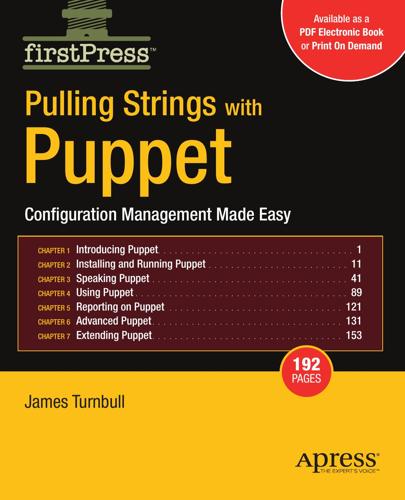
Pulling Strings With Puppet: Configuration Management Made Easy
by
James Turnbull
Published 1 Jan 2007
The examples are designed to give you an idea of how a production Puppet implementation could work. Some of the examples represent some best practice guidelines, but others are simply ideas about how you might go about using Puppet to articulate your configuration. We’ll also look at how to manage and store your Puppet configuration including using a revision control system, file serving, and modules. By the end of this chapter, you should have a strong understanding of what Puppet can do to manage your nodes and the best way to articulate, store, and administer that configuration. Note ➡ All the configuration examples in this chapter are available as a source code download from the Apress site.
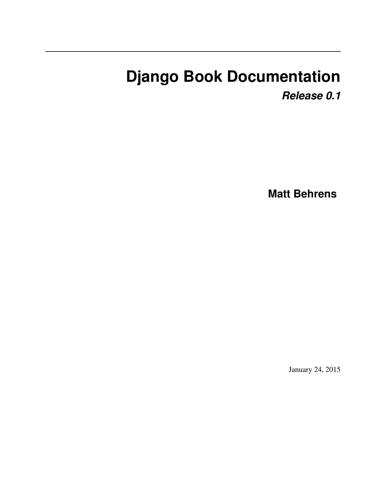
Django Book
by
Matt Behrens
Published 24 Jan 2015
Installing the “master” Version The latest and greatest Django development version is referred to as master, and it’s available from Django’s git repository. You should consider installing this version if you want to work on the bleeding edge, or if you want to contribute code to Django itself. Git is a free, open source distributed revision-control system, and the Django team uses it to manage changes to the Django codebase. You can use a Git client to grab the very latest Django source code and, at any given time, you can update your local version of the Django code, known as your local checkout, to get the latest changes and improvements made by Django developers.
…
If you updated the database correctly, the statement should work without errors. Then on the production server perform these steps: Start your database’s interactive shell. Execute the ALTER TABLE statement you used in step 3 of the development environment steps. Add the field to your model. If you’re using source-code revision control and you checked in your change in development environment step 1, now is the time to update the code (e.g., svn update, with Subversion) on the production server. Restart the Web server for the code changes to take effect. For example, let’s walk through what we’d do if we added a num_pages field to the Book model from Chapter 5.
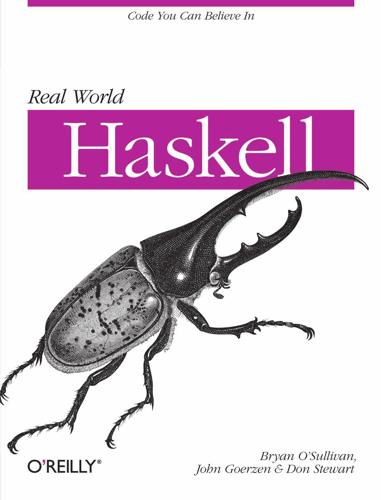
Real World Haskell
by
Bryan O'Sullivan
,
John Goerzen
,
Donald Stewart
and
Donald Bruce Stewart
Published 2 Dec 2008
Haskell in Industry and Open Source Here are just a few examples of large software systems that have been created in Haskell. Some of these are open source, while others are proprietary products: ASIC and FPGA design software (Lava, products from Bluespec, Inc.) Music composition software (Haskore) Compilers and compiler-related tools (most notably GHC) Distributed revision control (Darcs) Web middleware (HAppS, products from Galois, Inc.) The following is a sample of some of the companies using Haskell in late 2008, taken from the Haskell wiki: ABN AMRO An international bank. It uses Haskell in investment banking, in order to measure the counterparty risk on portfolios of financial derivatives.
…
This means that our attempt to use simpleFind will list directories ending in .c as well as files with the same extension. The second problem is that simpleFind gives us no control over how it traverses the filesystem. To see why this is significant, consider the problem of searching for a source file in a tree managed by the Subversion revision control system. Subversion maintains a private .svn directory in every directory that it manages; each one contains many subdirectories and files that are of no interest to us. While we can easily filter out any path containing .svn, it’s more efficient to simply avoid traversing these directories in the first place.
…
, Introducing Local Variables–The Offside Rule and Whitespace in an Expression, Local Functions, Global Variables global, Local Functions, Global Variables local, Introducing Local Variables–The Offside Rule and Whitespace in an Expression W Wadler, Philip, Further Reading waitFor function, Finding the Status of a Thread -Wall GHC option, Compilation Options and Interfacing to C weak head normal form (WHNF), Normal Form and Head Normal Form, Separating Algorithm from Evaluation, Strictness and Tail Recursion web client programming, Extended Example: Web Client Programming–Main Program well typed rules, Strong Types where clause, The where Clause, The Anatomy of a Haskell Module whitespace in expressions, The Offside Rule and Whitespace in an Expression–The case Expression, A Note About Tabs Versus Spaces vs. tab characters, A Note About Tabs Versus Spaces WHNF (weak head normal form), Normal Form and Head Normal Form, Separating Algorithm from Evaluation, Strictness and Tail Recursion widgets (GUI programming), Glade Concepts wild card patterns, The Wild Card Pattern Windows, installing GHC/Haskell libraries, Windows withForeignPtr function, Pattern Matching with Substrings withTransaction function, Transactions Word type, Numeric Types Word16 type, Numeric Types Word32 type, Numeric Types Word64 type, Numeric Types Word8 type, Numeric Types writeChan function, Chan Is Unbounded writeFile function, readFile and writeFile Writer monad, The Writer Monad and Lists WriterT monad transformer, Motivation: Boilerplate Avoidance X x86_64 assembly, Tuning the Generated Assembly XML, Extended Example: Web Client Programming, Glade Concepts widget descriptions saved as, Glade Concepts xor function, Numeric Types Z zero-width escape sequences, The Zero-Width Escape Sequence zip function, Working with Several Lists at Once zipWith function, Working with Several Lists at Once About the Authors Bryan O'Sullivan is an Irish hacker and writer who likes distributed systems, open source software, and programming languages. He was a member of the initial design team for the Jini network service architecture (subsequently open sourced as Apache River). He has made significant contributions to, and written a book about, the popular Mercurial revision control system. He lives in San Francisco with his wife and sons. Whenever he can, he runs off to climb rocks. John Goerzen is an American hacker and author. He has written a number of real-world Haskell libraries and applications, including the HDBC database interface, the ConfigFile configuration file interface, a podcast downloader, and various other libraries relating to networks, parsing, logging, and POSIX code.
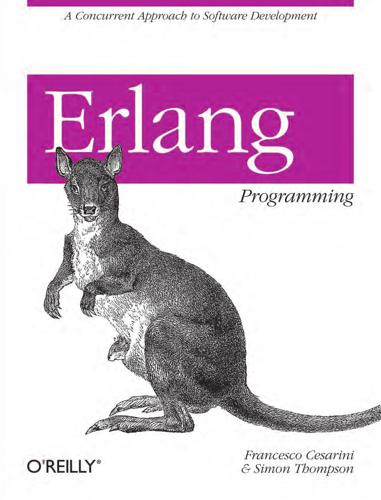
Erlang Programming
by
Francesco Cesarini
Other code is dynamically loaded when a fully qualified function is made to a function in that module. In embedded mode, all the modules listed in a binary boot file are loaded at startup. After startup, calls to modules that have not been loaded result in a runtime error. Embedded mode enforces strict revision control, as it requires that all modules are available at startup. Lastly, it does not impact the soft real-time aspects of the system by stopping, searching, and loading a module during a time-critical operation, as might be the case for interactive mode. You can choose your mode by starting Erlang with the erl -mode Mode directive, where Mode is either embedded or interactive.
…
Once you found the tuple, inserting an io:format/2 statement that prints the error and process information would not solve the problem, as in live systems, processes come and go and millions of entries are inserted and deleted from ETS tables each hour. In addition, because this is a live system with strict revision control, code changes must be tested and approved before being deployed. This option, even if it’s tempting, would result in a slow turnaround time. Don’t get wound up on release procedures and slow turnaround times from the quality assurance team, however, as you can do better! In Erlang, the first thing a developer or support engineer would consider doing is to turn on the trace facility for all calls to the ets:insert/2 function.

Move Fast and Break Things: How Facebook, Google, and Amazon Cornered Culture and Undermined Democracy
by
Jonathan Taplin
Published 17 Apr 2017
Doug called the system he had built the oN-Line System (NLS), and in the 100-minute demonstration that would follow he planned to introduce the world to (in the words of Engelbart’s biographer Thierry Bardini) “windows, hypertext, graphics, efficient navigation, command input, videoconferencing, the computer mouse, word processing, dynamic file linking, revision control, and a collaborative real-time editor.” But for the moment no one was sure that what would later be called the Mother of All Demos would work. Doug had told someone at NASA earlier in the week that he was going to show the system publicly—“Maybe it’s a better idea you don’t tell us, just in case it crashes,” the NASA employee advised him.

Site Reliability Engineering: How Google Runs Production Systems
by
Betsy Beyer
,
Chris Jones
,
Jennifer Petoff
and
Niall Richard Murphy
Published 15 Apr 2016
If the DNS team’s test was blocked on the Machine Database team’s configuration of a new cluster, as soon as the cluster appeared in the database, the DNS team’s tests and fixes would start working. Take the test shown in Figure 7-2 as an example. If TestDnsMonitoringConfigExists fails, as shown, we can call FixDnsMonitoringCreateConfig, which scrapes configuration from a database, then checks a skeleton configuration file into our revision control system. Then TestDnsMonitoringConfigExists passes on retry, and the TestDnsMonitoringConfigPushed test can be attempted. If the test fails, the FixDnsMonitoringPushConfig step runs. If a fix fails multiple times, the automation assumes that the fix failed and stops, notifying the user. Armed with these scripts, a small group of engineers could ensure that we could go from “The network works, and machines are listed in the database” to “Serving 1% of websearch and ads traffic” in a matter of a week or two.
…
Fake Backend Versions When implementing release tests, the fake backend is often maintained by the peer service’s engineering team and merely referenced as a build dependency. The hermetic test that is executed by the testing infrastructure always combines the fake backend and the test frontend at the same build point in the revision control history. That build dependency may be providing a runnable hermetic binary and, ideally, the engineering team maintaining it cuts a release of that fake backend binary at the same time they cut their main backend application and their probes. If that backend release is available, it might be worthwhile to include hermetic frontend release tests (without the fake backend binary) in the frontend release package.
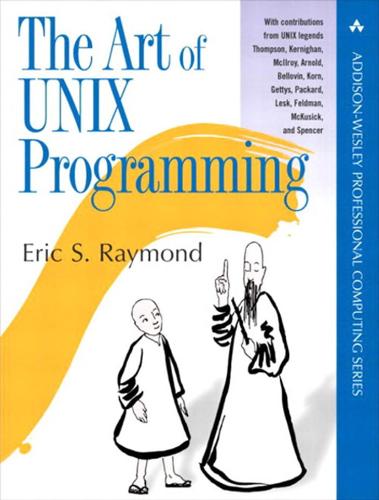
The Art of UNIX Programming
by
Eric S. Raymond
Published 22 Sep 2003
SCCS is still in use to manage old projects at some commercial vendors, but can no longer be recommended for new projects. No complete open-source implementation of SCCS exists. A clone called CSSC (Compatibly Stupid Source Control) is in development under the sponsorship of the FSF. Revision Control System (RCS) The superior open-source alternatives began with RCS (Revision Control System), born at Purdue University a few years after SCCS and originally distributed with 4.3BSD Unix. It is logically similar to SCCS but has a cleaner command interface, and good facilities for grouping together entire project releases under symbolic names.
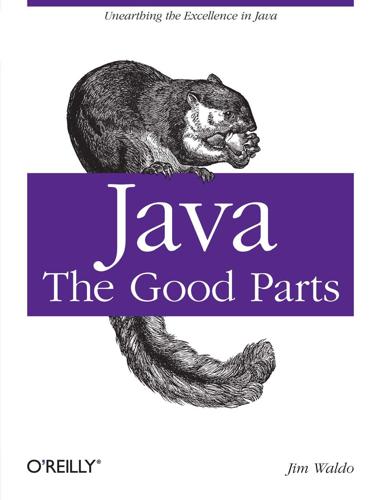
Java: The Good Parts
by
Jim Waldo
‡ LISP programmers are always happy to tell you just how much better LISP was than anything before or since, how much better it was as a development language, and how all the advances that have occurred since then are just attempts at recreating what they had 30 years ago. Even if they are right, they need to let it go. IDEs | 165 This is not to say that everything is perfect with these tools. I have had, well…interesting experiences with the way IDEs interface with revision control systems. The view of what code is appropriate may strike some as a bit fascistic. And the user interface— well, let’s just say this is the sort of interface that could only have been produced by programmers on an open source project. Everything can be configured and changed, which is the good news.
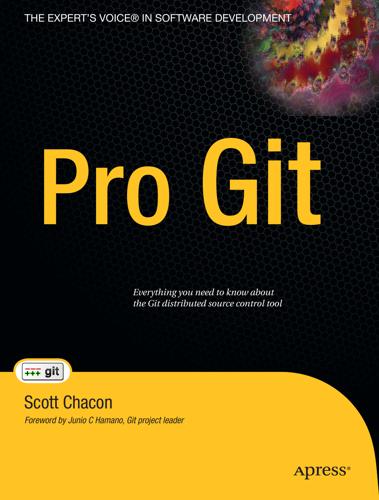
Pro Git
by
Scott Chacon
Published 17 Aug 2009
This approach is very common because it is so simple, but it is also incredibly error prone. It is easy to forget which directory you’re in and accidentally write to the wrong file or copy over files you don’t mean to. To deal with this issue, programmers long ago developed local VCSs that had a simple database that kept all the changes to files under revision control (see Figure 1–1). Figure 1–1. Local version control diagram. One of the more popular VCS tools was a system called rcs, which is still distributed with many computers today. Even the popular Mac OS X operating system includes the rcs command when you install the Developer Tools. This tool basically works by keeping patch sets (that is, the differences between files) from one change to another in a special format on disk; it can then re-create what any file looked like at any point in time by adding up all the patches.

Technical Blogging: Turn Your Expertise Into a Remarkable Online Presence
by
Antonio Cangiano
Published 15 Mar 2012
Many of these generators are simple, small, and written in scripting languages such as Python, Perl, and Ruby; so if you are familiar with these languages, you’ll be able to easily extend them to customize their behavior. This process is arguably much simpler than learning how to customize a large system such as WordPress. Other points in favor of Jekyll and similar static generators are the ability to store your blog under revision control through tools like Git or Subversion and the simplicity of being able to deploying the output site pretty much anywhere, as well as its positive performance implications. In fact, since your blog ends up being a static site, its performance should be very good—even on commodity hardware. The major disadvantage is that you are on your own.

Capitalism Without Capital: The Rise of the Intangible Economy
by
Jonathan Haskel
and
Stian Westlake
Published 7 Nov 2017
The question of how people use technology to boost what some call “collective intelligence” has a long history: it lies behind the famous “mother of all demos,” the 1968 presentation in which Douglas Engelbart demonstrated the world’s first instances of videoconferencing, dynamic file linking, revision control, and electronic collaboration. Collective intelligence is intimately entwined with the development of Internet phenomena like Wikipedia, and it continues to evolve in the form of platforms like Slack and GitHub. An economy that can develop technologies and ways of working that replicate the social power of face-to-face interaction at a distance will be transformed, particularly when it comes to land use.

Coders at Work
by
Peter Seibel
Published 22 Jun 2009
I think having worked with that simpler system imposes a kind of disciplined way of thinking. If you haven't got a directory system and you have to put all the files in one directory, you have to be fairly disciplined. If you haven't got a revision control system, you have to be fairly disciplined. Given that you apply that discipline to what you're doing it doesn't seem to me to be any better to have hierarchical file systems and revision control. They don't solve the fundamental problem of solving your problem. They probably make it easier for groups of people to work together. For individuals I don't see any difference. Also, I think today we're kind of overburdened by choice.

Remix: Making Art and Commerce Thrive in the Hybrid Economy
by
Lawrence Lessig
Published 2 Jan 2009
The company hopes that the ease and quality of its distribution (not to mention its price) will drive many more individual computer users to use Ubuntu Linux. Canonical aims to profit from the community-driven and community-developed Ubuntu. Its vision is inspired by Shuttleworth, who says he has been “fascinated by this phenomenon of collaboration around a common digital good with strong revision control.”7 That collaboration is done through a community. Canonical intends to “differentiate ourselves by having the best community. Being the easiest to work with, being the group where sensible things happen first and happen fastest.” “Community,” Shuttleworth said to me, “is the absolute essence of what we do.”

The Nature of Software Development: Keep It Simple, Make It Valuable, Build It Piece by Piece
by
Ron Jeffries
Published 14 Aug 2015
The 12-Factor App Originally created by engineers at Heroku, the 12-factor app is a succinct description of a cloud-native, scalable, deployable application.[20] Even if you’re not running in a cloud, it makes a great checklist for application developers. The “factors” identify different potential impediments to deployment, with recommended solutions for each: Codebase Track one codebase in revision control. Deploy the same build to every environment. Dependencies Explicitly declare and isolate dependencies. Config Store config in the environment. Backing services Treat backing services as attached resources. Build, release, run Strictly separate build and run stages. Processes Execute the app as one or more stateless processes.
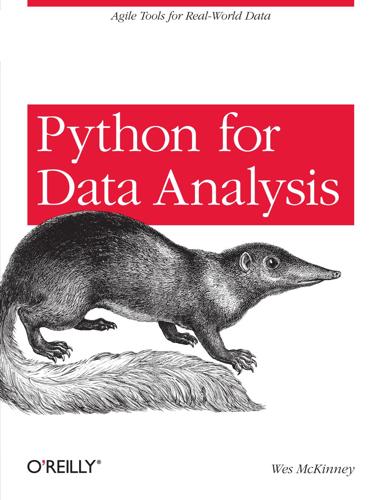
Python for Data Analysis
by
Wes McKinney
Published 30 Dec 2011
These should be read left to right and executed separately. In [5]: code In [6]: code2 Out[5]: output Out[6]: output2 Data for Examples Data sets for the examples in each chapter are hosted in a repository on GitHub: http://github.com/pydata/pydata-book. You can download this data either by using the git revision control command-line program or by downloading a zip file of the repository from the website. I have made every effort to ensure that it contains everything necessary to reproduce the examples, but I may have made some mistakes or omissions. If so, please send me an e-mail: wesmckinn@gmail.com. Import Conventions The Python community has adopted a number of naming conventions for commonly-used modules: import numpy as np import pandas as pd import matplotlib.pyplot as plt This means that when you see np.arange, this is a reference to the arange function in NumPy.
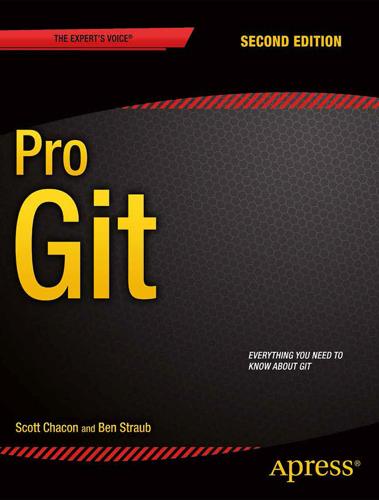
Pro Git
by
Scott Chacon
and
Ben Straub
Published 12 Nov 2014
This approach is very common because it is so simple, but it is also incredibly error prone. It is easy to forget which directory you’re in and accidentally write to the wrong file or copy over files you don’t mean to. To deal with this issue, programmers long ago developed local VCSs that had a simple database that kept all the changes to files under revision control. Figure 1-1. Local version control. One of the more popular VCS tools was a system called RCS, which is still distributed with many computers today. Even the popular Mac OS X operating system includes the rcs command when you install the Developer Tools. RCS works by keeping patch sets (that is, the differences between files) in a special format on disk; it can then re-create what any file looked like at any point in time by adding up all the patches.
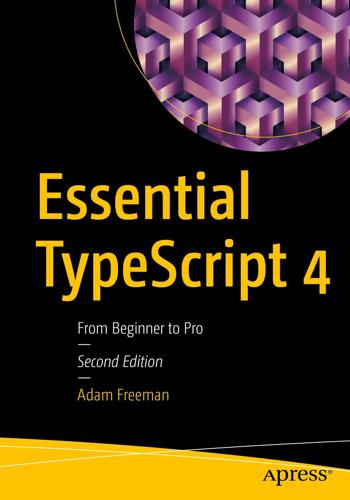
Essential TypeScript 4: From Beginner to Pro
by
Adam Freeman
To ensure consistency, NPM creates the package-lock.json file, which contains a complete list of the packages installed in the node_module folder, along with the versions that were used. The package-lock.json file is updated by NPM when changes are made to the packages in the project and the versions it contains are used by the npm install command. Note The package.json and package-lock.json files should be checked in for revision control to ensure everyone on the development team gets the same packages. When you pull updates from the repository, make sure you run the npm install command to receive any new packages that have been added by another developer. Understanding the TypeScript Compiler Configuration File The TypeScript compiler, tsc, is responsible for compiling TypeScript files.
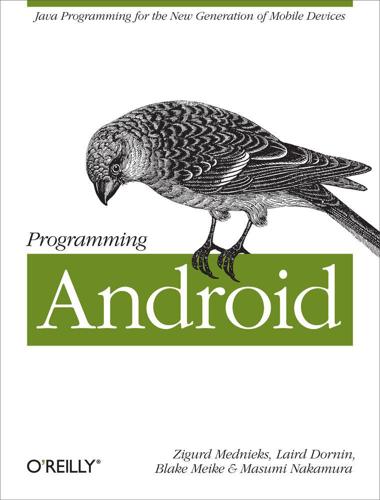
Programming Android
by
Zigurd Mednieks
,
Laird Dornin
,
G. Blake Meike
and
Masumi Nakamura
Published 15 Jul 2011
The autogenerated code, along with code created for AIDL objects (see AIDL and Remote Procedure Calls ), is put into the gen directory. The compiler compiles the code from both directories to produce the contents of bin. The full structure of a project was described in detail in Chapter 3. Note When you add your project to a revision control system like Git, Subversion, or Perforce, be sure to exclude the bin and gen directories! Your application source code goes in the src directory. As noted in Chapter 2, you should put all your code into a package whose name is derived from the domain name of the owner of the code. Suppose, for instance, that you are a developer at large, doing business as awesome-android.net.

Game Over Press Start to Continue
by
David Sheff
and
Andy Eddy
Published 1 Jan 1993
In games designed for ROB, such as “Gyromite” and “Stack-Up,” players would cause the robot to pick up chips from one stack and drop them onto a pad that triggered a door in an on-screen game. More than anything, ROB looked cool. He would be used to sell the video-game machine. James and Barr worked on a new design for the system—again high-tech gray, but boxier. Game cartridges slid into the front instead of the top, and revised controllers were attached by plastic cords. It wasn’t toylike—it still looked like a consumer electronics product—but it was simpler than AVS. Nintendo de-emphasized the box in favor of ROB and the Zapper gun. At the June 1985 Consumer Electronics Show, Nintendo debuted what Arakawa had renamed the Nintendo Entertainment System, or the NES.
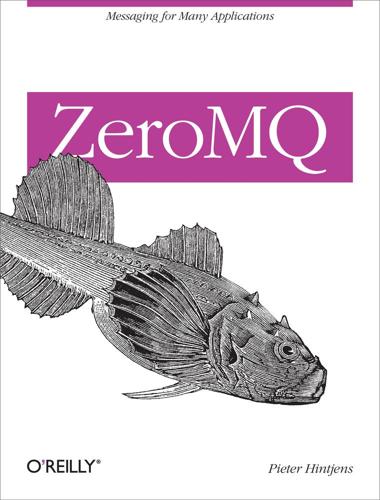
ZeroMQ
by
Pieter Hintjens
Published 12 Mar 2013
Ultimately, we’re economic creatures, and the sense that “we own this, and our work can never be used against us” makes it much easier for people to invest in an open source project like ØMQ. And it can’t be just a feeling, it has to be real. There are a number of aspects to making collective ownership work; we’ll see these one by one as we go through C4. Preliminaries The project SHALL use the Git distributed revision control system. Git has its faults. Its command-line API is horribly inconsistent, and it has a complex, messy internal model that it shoves in your face at the slightest provocation. But despite doing its best to make its users feel stupid, Git does its job really, really well. More pragmatically, I’ve found that if you stay away from certain areas (branches!)

Evidence-Based Technical Analysis: Applying the Scientific Method and Statistical Inference to Trading Signals
by
David Aronson
Published 1 Nov 2006
When this is the case, lagged values must be used that take into account reporting delays or revisions. The case study avoided look-ahead bias by assuming entries and exits on the open price of the day following a position-reversal signal. Moreover, none of data series used were subject to reporting lags or revisions. Controlled for Data-Mining Bias. Few rule studies in popular TA apply significance tests of any sort. Thus, they do not address the possibility that rule profits may be due to ordinary sampling error. This is a serious omission, which is easily corrected by applying ordinary hypothesis tests. However, ordinary tests of significance are only appropriate when only one rule has been back tested.
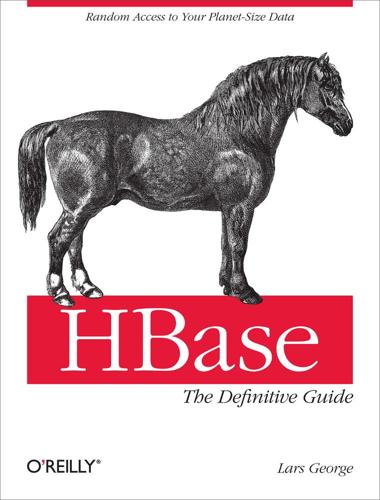
HBase: The Definitive Guide
by
Lars George
Published 29 Aug 2011
Building the code requires a few auxiliary command-line tools: Java HBase is written in Java, so you do need to have Java set up for it to work. Java has the details on how this affects the installation. For the examples, you also need Java on the workstation you are using to run them. Git The repository is hosted by GitHub, an online service that supports Git—a distributed revision control system, created originally for the Linux kernel development.[3] There are many binary packages that can be used on all major operating systems to install the Git command-line tools required. Alternatively, you can download a static snapshot of the entire archive using the GitHub download link.

The Architecture of Open Source Applications
by
Amy Brown
and
Greg Wilson
Published 24 May 2011
Centralized Version Control The first version control system was the Source Code Control System, SCCS, first described in 1975. It was mostly a way of saving deltas to single files that was more efficient than just keeping around copies, and didn't help with publishing these changes to others. It was followed in 1982 by the Revision Control System, RCS, which was a more evolved and free alternative to SCCS (and which is still being maintained by the GNU project). After RCS came CVS, the Concurrent Versioning System, first released in 1986 as a set of scripts to manipulate RCS revision files in groups. The big innovation in CVS is the notion that multiple users can edit simultaneously, with merges being done after the fact (concurrent edits).
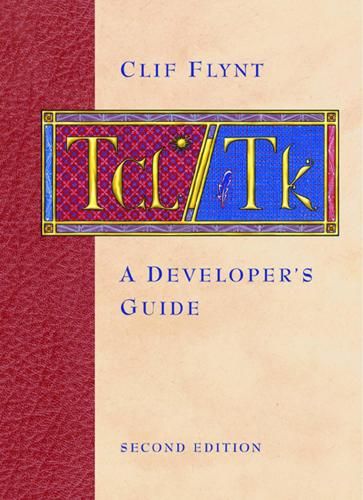
Tcl/Tk, Second Edition: A Developer's Guide
by
Clif Flynt
Published 18 May 2003
Experienced users use this feature to write small programs from the command line to accomplish simple tasks. For instance, suppose you give a friend a set of source code, and a few weeks later he returns it with a bunch of tweaks and fixes. You may want to go through all the source code to see what has been changed in each file before you commit the changes to your revision control system. Using a UNIX-style shell, you can compare all files in one directory to files with the same name in another directory and place the results in a file with a DIF suffix. The commands at the Bourne, Korn, or Bash shell prompt are as follows: $ for i in *.c do diff $i ../otherDir/$i >$i.DIF done You can use tclsh to gain this power in the Windows and Macintosh worlds.
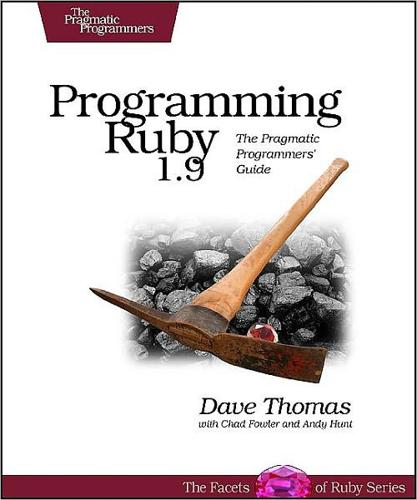
Programming Ruby 1.9: The Pragmatic Programmer's Guide
by
Dave Thomas
,
Chad Fowler
and
Andy Hunt
Published 15 Dec 2000
Report erratum RUNNING RUBY 31 The Very Latest Ruby For those who just have to be on the very latest, hot-off-the-press, and untested cutting edge (as we were while writing this book), you can get development versions straight from the developers’ working repository. The Ruby developers use Subversion (often abbreviated as SVN) as their revision control system. Subversion clients can be downloaded from http://subversion.tigris.org/. You can check files out as an anonymous user from their archive by executing the following SVN command: $ svn co http://svn.ruby-lang.org/repos/ruby/trunk ruby The complete source code tree, just as the developers last left it, will now be copied to a ruby subdirectory on your machine.